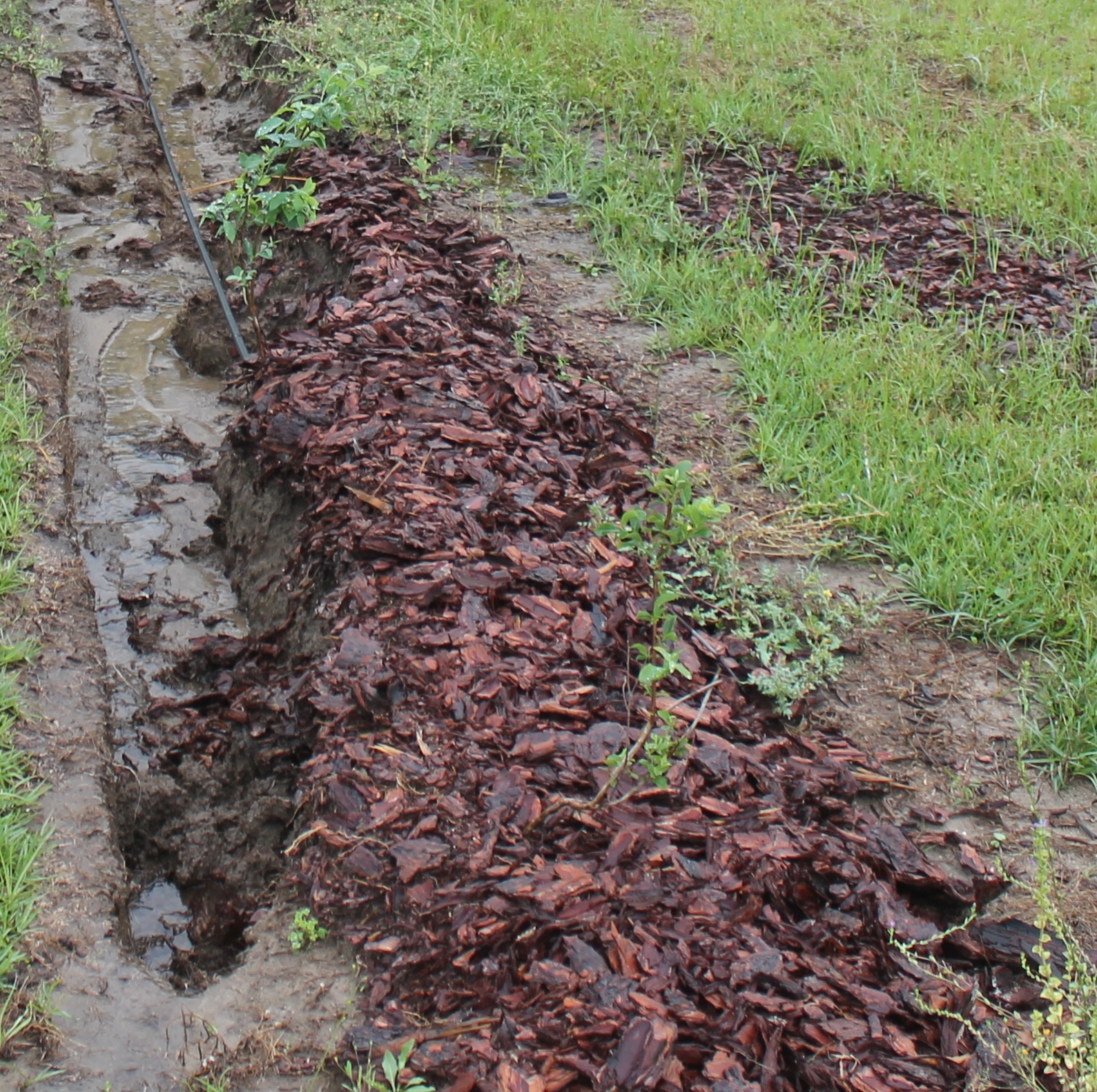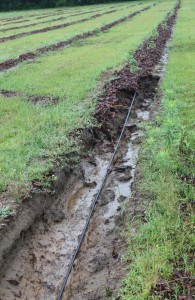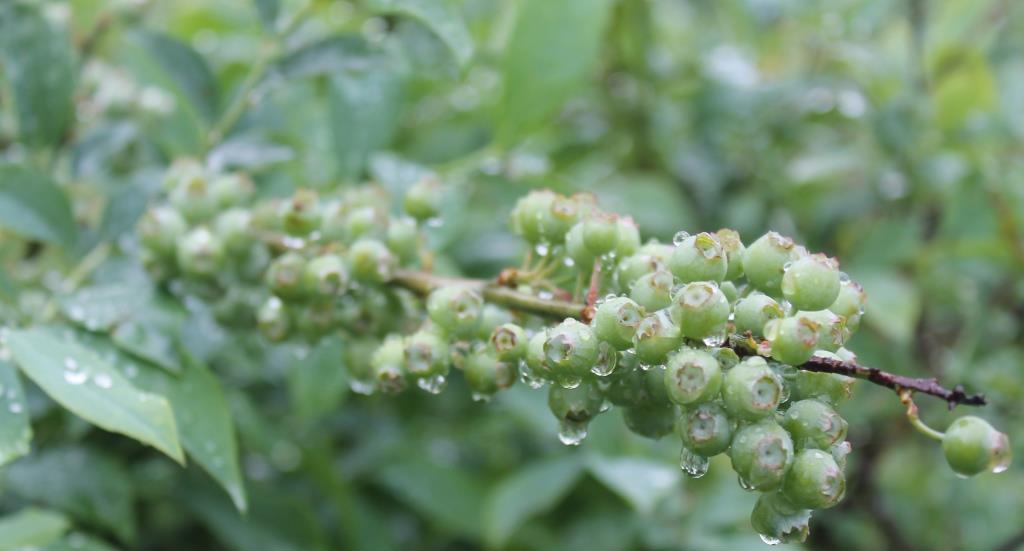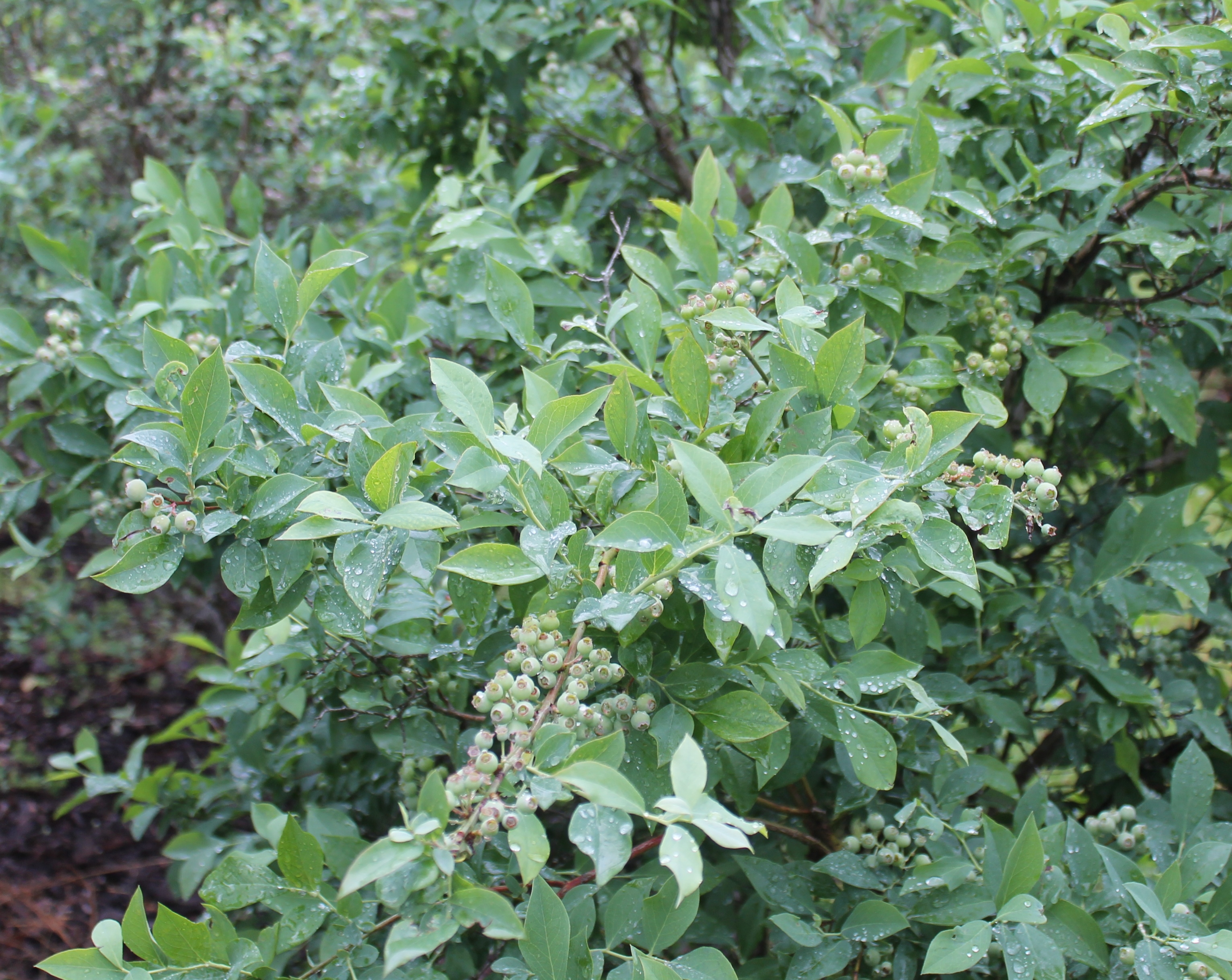Although the central Florida panhandle has been hit with excessive rainfall this spring, the blueberry yield this year is on track to be above average. Colder winter temperatures coupled with wet spring weather has enhanced the yield potential of properly tended and well established planted blueberries. If you have a few established blueberry plants in your home orchard, the outlook looks bright. If you do not, don’t fret. There are plenty of U-Pick operations and local farmers market vendors that will have berries available June through July, at great prices!
Blueberries do best planted in low pH soil on slightly sloping ground. This prevents the collection of water and resulting root rot in areas with poor drainage. While this situation is ideal for established blueberry plants, this slightly sloping situation can cause issues for newly planted blueberries. Field wash-outs caused by excessive rainfall can wreck newly planted rows, because the pine bark added to the planting trench is less dense than soil.
After all this rain, what should the home gardener do to ensure a productive harvest this summer? Addition of fertilizer will help. Although blueberries usually require low fertilization rates, if leaves show yellowed edges, red spots or general yellowing, fertilizer may have leached out. Application of a few ounces of ammonium or urea based fertilizer around the root zone (24 inch) of established plants may be beneficial. It is a good idea to look for “Blueberry Special” blends or “Camellia & Azalea” fertilizer. To learn more about blueberry fertilization, consult the Blueberry Gardener’s Guide.
A drier May will help blueberries produce their greatest sweetness as they develop. Late May and June rains could cause fruit split, so less rain during this period is desired!
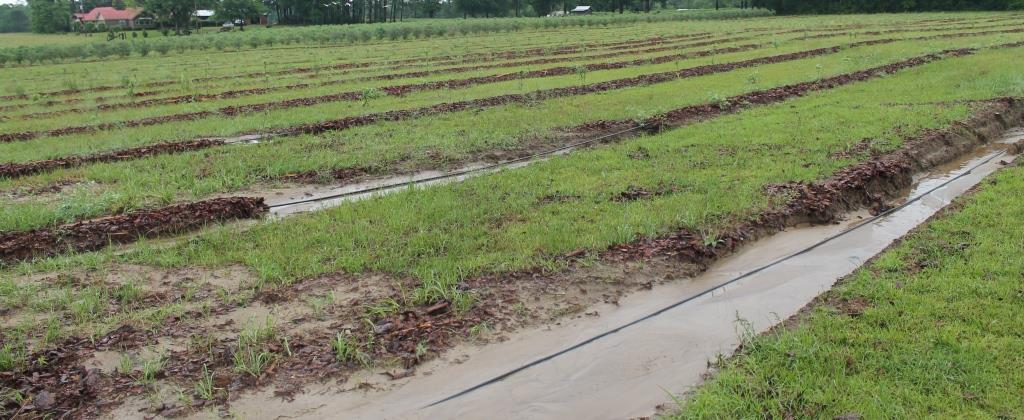
Washed out rows of young blueberries. Note healthy established plants in the background. No washout due to established root system. Image Credit Matthew Orwat

Emergency drainage ditch dug to reduce wash-out damage from field runoff. Image Credit Matthew Orwat
- Woodland Pinkroot Adds Vibrant Color to Spring Landscapes - April 27, 2023
- Easy Care Roses for the Gulf South - April 20, 2023
- Herb Gardening: When Oregano is Flavorless - March 9, 2023

